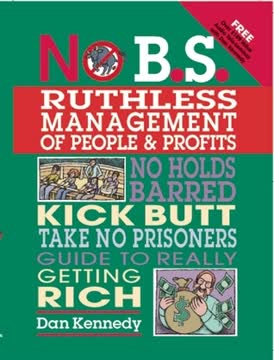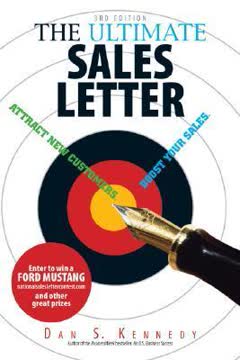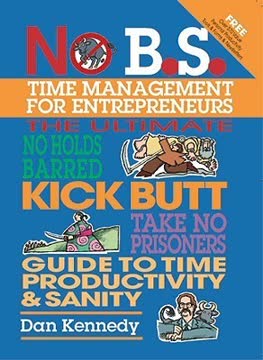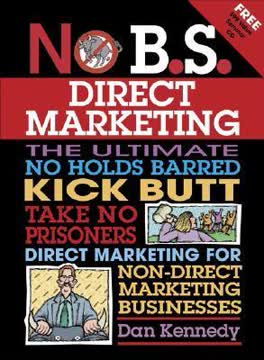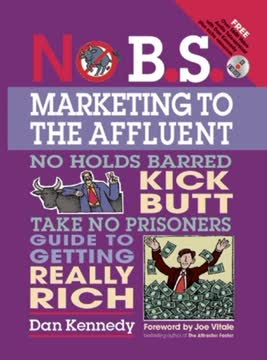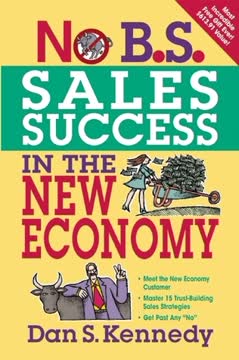Key Takeaways
1. Embrace the Adversarial Nature of Employer-Employee Relationships
It is adversarial because your agenda is in conflict with theirs, and you are constantly interfering with their ability to act out their agenda.
Conflicting agendas are inevitable. The fundamental nature of the employer-employee relationship is inherently adversarial. Employers seek to maximize profits, while employees prioritize their own lives, families, and personal interests. Expecting employees to have an "ownership mentality" is unrealistic and sets the stage for disappointment.
Acknowledge the disparity. There is unavoidable resentment stemming from differences in wealth and power. Employees may believe they are doing all the work while the owner reaps all the rewards. The ability to fire them, dictate vacation times, and control their work lives further exacerbates this resentment.
Accurate thinking is essential. Business owners must acknowledge the true nature of the relationship and manage their businesses accordingly. This means understanding that employees are not friends or family, but rather individuals with their own agendas. By thinking accurately, rationally, and realistically, business owners can avoid disappointment and manage their businesses more effectively.
2. Reject Gobbledygook and Demand Practical, Profit-Driven Management
The word "profit" does not appear. Not even once.
Avoid vague, meaningless advice. Much of the management advice offered to business owners is filled with gobbledygook and theoretical concepts that lack practical value. Seminars, books, and newsletters often focus on employee happiness and personal growth, neglecting the primary purpose of employing people: profit.
Seek real-world experience. Business owners should be wary of advice from academics and theorists who lack real-world management experience. Instead, they should seek guidance from individuals who have a proven track record of managing businesses for profit.
Demand a guarantee. When investing in business advice, look for a guarantee of satisfaction. If the advice doesn't deliver practical value, you should be entitled to a refund. This ensures that you're getting real, actionable strategies, not just empty promises.
3. Establish "The Program" and Enforce It Ruthlessly
The Program is the way things are supposed to be done.
Create clear expectations. A well-defined "Program" outlines how employees are expected to talk, walk, act, and perform their jobs. Without a clear Program, employees will create their own, leading to inconsistent performance and missed goals.
Avoid vague employee manuals. The Program should not be a dull, boilerplate document filled with legal jargon. Instead, it should be a clearly stated, illustrated, and taught set of expectations that all employees understand and follow.
Enforce the Program consistently. Once the Program is established, it must be enforced consistently and ruthlessly. This means addressing unacceptable behavior immediately and holding employees accountable for their actions.
4. Prioritize Profitable Employees and Quantify Their ROI
I want a PROFITABLE employee.
Profit is the only rational reason to have an employee. The only justifiable reason to employ someone is if they generate more profit than they cost. Many business owners hire employees for irrational reasons, such as ego, poor self-esteem, or a need for social interaction.
Calculate the true cost of employees. Most business owners underestimate the true cost of employees by failing to account for factors such as mistakes, wasted time, and the cost of absence and replacement. A more accurate calculation reveals the true investment in each employee.
Measure ROI and demand results. Once the true cost of an employee is known, it's essential to quantify and measure the profit they generate. This requires establishing clear metrics and holding employees accountable for delivering a satisfactory return on investment.
5. Accept That All Employees Eventually "Go Lame"
They ALL go lame.
Inevitability of decline. Just as racehorses eventually go lame, all employees will eventually decline in performance or become unsuitable for their roles. This may be due to physical or psychological factors, loss of passion, or changing business needs.
Detach and prepare for change. Business owners must avoid becoming overly attached to employees, as the day will inevitably come when they must be sent packing. This requires a detached mindset and a willingness to make difficult decisions.
Act decisively when necessary. When an employee is no longer profitable, he must go. This may involve reassignment, retraining, or termination. The key is to act decisively and avoid prolonging the situation.
6. Avoid the "One Thing" Trap and Build Redundancy
Only the paranoid survive.
Diversify your dependencies. Relying too heavily on one employee, one client, one product, or one marketing channel creates vulnerability. If that "one thing" disappears, the business can be wiped out.
Cross-train and job-share. To mitigate the risk of losing a key employee, cross-train others to perform their duties. Job-sharing and job rotation can also provide redundancy and prevent dependence on a single individual.
Prepare for the unexpected. Bad things happen, and they often happen without warning. Business owners must be prepared for the unexpected and have contingency plans in place to deal with potential disasters.
7. Hire Slowly, Fire Fast, and Hunt for Useful People
Hire slow, fire fast.
Take your time when hiring. The majority is always wrong. Most business owners hire too quickly, often out of desperation to fill a vacancy. This leads to poor hiring decisions and increased management headaches.
Act decisively when firing. Most business owners delay firing bad employees for far too long, hoping they will improve. This is a mistake. Bad employees poison the workplace and negatively affect others.
Hunt for useful people. Finding competent and effective employees requires a proactive approach. This involves marketing the job opportunity effectively, setting clear expectations, and implementing a rigorous screening process.
8. Leadership is Overrated; Systems and Enforcement are Key
Leadership is vastly overrated.
Systems are more valuable than leaders. While leadership is often glorified, systems and procedures are far more valuable in ensuring consistent performance and profitability. Systems can be replicated and scaled, while leaders are often difficult to replace.
Enforcement is essential. Even the best systems are ineffective without consistent enforcement. This requires clear expectations, regular monitoring, and a willingness to hold employees accountable for their actions.
Average people can thrive with great systems. Exceptional people are rare and expensive. By implementing effective systems, businesses can achieve success with average employees.
9. Marketing is the Master; All Other Functions are Servants
Nothing happens until somebody sells something.
Marketing drives revenue. Marketing is the engine that drives revenue, and all other business functions should be subservient to it. This means prioritizing marketing initiatives and ensuring that operations support those initiatives.
Challenge the "can't do" attitude. Sound marketing ideas are often sabotaged by employees who resist change or claim that something can't be done. Business owners must resist this "can't do" attitude and demand that their employees find solutions.
Make marketing the governing imperative. The convenience and comfort of staff should not be prioritized over effective marketing. The goal is to maximize profits, and that requires a relentless focus on marketing.
10. Combat Time Theft and Maintain a Productivity-Only Workplace
Mice are mice.
Time theft is rampant. Employees often engage in time theft by using company resources for personal activities, such as browsing social media, playing games, or running errands. This can significantly reduce productivity and profitability.
Create a productivity-only workplace. To combat time theft, create a workplace that is free from distractions. This may involve implementing policies such as requiring employees to store personal items in lockers, limiting internet access, and monitoring computer usage.
The cat must never be away. To ensure compliance, implement surveillance measures such as video and audio monitoring, mystery shopping, and regular workspace inspections. This sends a clear message that time theft will not be tolerated.
11. Ruthlessly Manage Word-of-Mouth and Customer Perceptions
Trust. But cut the cards.
Word-of-mouth is powerful. What customers say about their experiences with your business is far more powerful than anything you can say in advertising. Negative word-of-mouth can quickly destroy a business.
Focus on the details. Even small details, such as a dirty window or a rude employee, can have a significant impact on customer perceptions. Business owners must be obsessed with maintaining a positive image and addressing any potential sources of negative word-of-mouth.
Empower employees to resolve issues. Give employees the authority to resolve customer complaints and make things right. This can turn a negative experience into a positive one and generate positive word-of-mouth.
12. Strive for "Good Enough" and Enforce Clear Standards
The physician can bury his mistakes but the architect can only advise his client to plant vines.
Perfectionism is paralysis. While striving for excellence is admirable, perfectionism can be costly and counterproductive. Business owners should focus on establishing clear standards and meeting those standards consistently, rather than chasing an unattainable ideal.
Establish clear standards. Determine what your customers value most and establish standards for meeting those expectations. These standards should be clearly communicated to employees and consistently enforced.
Enforce standards ruthlessly. There can be no exceptions to the established standards. Employees who fail to meet those standards must be held accountable, regardless of their personal circumstances.
Last updated:
FAQ
What’s [No B.S. Ruthless Management of People and Profits] by Dan S. Kennedy about?
- Profit-Driven Management: The book is a blunt, no-nonsense guide to managing employees and profits ruthlessly to maximize business success, focusing on practical, profit-focused tactics over academic theories.
- Employer-Employee Reality: Kennedy exposes the true, often adversarial nature of the employer-employee relationship, emphasizing clear expectations and accountability.
- Comprehensive Business Insights: Topics range from hiring and firing, sales process management, motivation, bonus plans, to handling business growth and exit strategies.
Why should I read [No B.S. Ruthless Management of People and Profits] by Dan S. Kennedy?
- Brutally Honest Advice: The book offers unvarnished, actionable strategies for business owners frustrated with employee issues and profit leaks.
- Profit and Accountability Focus: Kennedy challenges common management myths, showing that prioritizing profits and enforcing accountability are essential for sustainable success.
- Real-World Experience: The author draws on decades of hands-on business management, providing tested methods that can be implemented immediately.
What are the key takeaways from [No B.S. Ruthless Management of People and Profits] by Dan S. Kennedy?
- Measurement Drives Motivation: Tracking and posting key performance indicators motivates employees and increases productivity.
- Hire and Fire Ruthlessly: Deliberate hiring and swift firing of underperformers are crucial to maintaining a profitable, high-performing team.
- Systems Over Charisma: Well-designed systems and procedures are more important than relying on charismatic leadership.
- Sales and Marketing Mastery: Scientific management of the sales process and relentless focus on marketing are non-negotiable for business growth.
What is Dan S. Kennedy’s view on the employer-employee relationship in [No B.S. Ruthless Management of People and Profits]?
- Inherently Adversarial: Employees have their own agendas, often conflicting with the owner’s profit-driven goals; expecting an "ownership mentality" is unrealistic.
- Not Friends or Family: While friendliness is encouraged, employees ultimately work for a paycheck and will not share the owner’s passion or commitment.
- Clear Expectations Needed: Recognizing this reality allows owners to manage with supervision, enforcement, and accurate thinking rather than misplaced trust.
What are the most crucial management decisions in [No B.S. Ruthless Management of People and Profits]?
- Hire Profitable Employees: Only keep employees who generate a multiple of their cost; avoid keeping staff out of guilt or social reasons.
- Calculate True Employee Cost: Factor in taxes, benefits, overhead, mistakes, and management time to understand the real cost of each employee.
- Demand ROI: Quantify the profit each employee generates and maintain a "vicious intolerance" for unsatisfactory returns.
What does “Hire Slow, Fire Fast” mean in [No B.S. Ruthless Management of People and Profits]?
- Avoid Desperation Hiring: Take time to find the right fit, using rigorous screening and not settling for "good enough."
- Swiftly Remove Underperformers: Act quickly to fire employees who consistently underperform or disrupt the business.
- Protect Morale and Profits: Prompt action prevents workplace toxicity and profit loss caused by poor performers.
How does Dan S. Kennedy recommend finding and managing useful employees and vendors in [No B.S. Ruthless Management of People and Profits]?
- Treat Hiring as Marketing: Use creative, challenging application processes to filter for motivated, detail-oriented candidates.
- Thorough Screening: Conduct background checks, verify work history, and use probationary periods to ensure fit.
- Performance-Based Commitment: Only fully commit to employees or vendors after they prove their worth on the job.
Why does Dan S. Kennedy claim leadership is “vastly overrated” in [No B.S. Ruthless Management of People and Profits]?
- Systems Over Charisma: Sustainable success comes from robust systems and procedures, not just visionary leaders.
- Average Workforce Reality: Most employees are average and respond better to clear systems than to grand leadership ideals.
- Results Over Inspiration: Measurable business results stem from management and enforcement, not just motivational speeches.
What is the “Marketing the Master, All Others Servants” concept in [No B.S. Ruthless Management of People and Profits]?
- Marketing Drives Everything: Marketing is the primary function that brings in customers and revenue; all other functions must support it.
- Overcoming Internal Resistance: Employees and managers may resist marketing initiatives, but these must be enforced for business success.
- Profit Maximization: Effective marketing is the top priority, with all other business activities serving to support it.
How does [No B.S. Ruthless Management of People and Profits] address employee theft and time theft?
- Widespread Rationalization: Most employees justify minor thefts of time or materials, leading to significant profit loss.
- Situational Ethics: Employees often believe small thefts are acceptable if they think they won’t be caught.
- Strict Enforcement: The only way to prevent theft is through surveillance, audits, and swift consequences for violations.
What is the “Sales Choreography®” method in [No B.S. Ruthless Management of People and Profits]?
- Scripted Sales Process: Every word and action in the sales environment should be choreographed for maximum effectiveness.
- Control and Consistency: Salespeople must follow proven programs rather than improvising, ensuring the best presentation every time.
- Integration with Marketing: Sales choreography is part of a larger system that links advertising, marketing, and sales for smooth prospect conversion.
What are the essential numbers and metrics to manage according to [No B.S. Ruthless Management of People and Profits] by Dan S. Kennedy?
- Marketing and Sales Metrics: Track Cost per Lead, Cost per Sale, Average Transaction Value, Customer Value, and Lifetime Customer Value to understand profitability.
- Operational Metrics: Monitor Expense Creep, Problem Creep, and Quality Control to manage costs and service quality.
- Financial Health Indicators: Keep an eye on Present Bank, Future Bank, and Wealth Accumulation to measure income, equity, and personal wealth growth.
- Sales Effectiveness: Regularly track conversion rates and transaction sizes at every stage to optimize the sales process.
Review Summary
No B.S. Ruthless Management of People and Profits receives mixed reviews. Some praise its no-nonsense approach to business management, focusing on profit maximization and employee efficiency. Others criticize its harsh tactics and outdated views on worker-employer relationships. The book is particularly popular in post-Soviet countries. Readers appreciate Kennedy's direct style and practical advice, though some find his methods too extreme. Many note the book's usefulness for small business owners but question its applicability to modern, innovative companies or creative industries.
Download PDF
Download EPUB
.epub digital book format is ideal for reading ebooks on phones, tablets, and e-readers.
